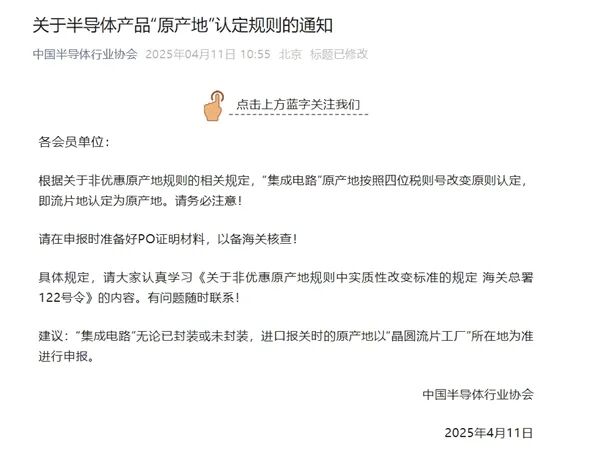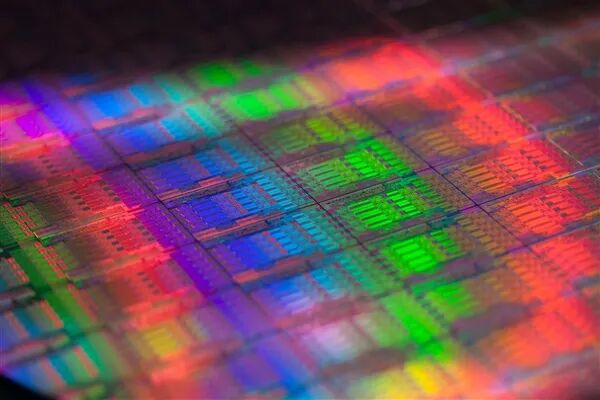
On April 11, the China Semiconductor Industry Association issued an “Emergency Notice on the Rules for Determining the ‘Origin’ of Semiconductor Products” against the backdrop of the tariff war. According to the relevant regulations of the General Administration of Customs, the origin of “integrated circuits” is determined based on the principle of changing the four-digit tariff code, meaning that the wafer fab location is recognized as the origin.
In the notice, the China Semiconductor Industry Association reminded member units to prepare PO proof materials for customs verification during declaration. It also stated that members should carefully study the content of the “Regulations on Substantial Changes in Non-Preferential Origin Rules, General Administration of Customs Order No. 122”.
The China Semiconductor Industry Association also suggested that for “integrated circuits”, whether packaged or unpackaged, the origin for import customs declaration should be based on the location of the “wafer fab factory”.

It is understood that the four-digit tariff code refers to the classification number used by customs to categorize goods.
In the Customs Cooperation Council Nomenclature (CCCN), it is generally presented in four digits. The first two digits represent the chapter to which the goods belong, while the last two digits represent the specific tariff code under that chapter. For example, in import and export operations, the four-digit tariff code can determine the classification of goods, thereby clarifying the applicable tariff rates and regulatory conditions.
This is an important basis for customs management, taxation, and statistics of import and export goods, and it is also a key element for enterprises to accurately declare product information during customs clearance.
Under the rule of “wafer fab location as origin”, market participants have indicated thatchips from companies like Apple, AMD, and Qualcomm, which are manufactured by TSMC, will have their origin recognized as Taiwan, China (not subject to high tariffs).
In contrast, chips from IDM manufacturers like Intel, Texas Instruments, ADI, and ON Semiconductor, which have their own factories in the United States, will have their origin recognized as the United States, potentially facing tariffs exceeding 84%.
Han Juke, Vice President of the China Communications Industry Association, stated thatusing the wafer fab location as the origin can more accurately identify the true technological source of the chips, avoiding the ambiguity of key technology attribution through the packaging location (usually labor-intensive areas).
At the same time, this move is a key step in China’s semiconductor industry chain’s self-controllable strategy, aligning with international trade rules and providing institutional support for domestic industry upgrades. In the future, as origin data accumulates, China’s policy formulation and market regulation in the semiconductor field will become more targeted.

end
